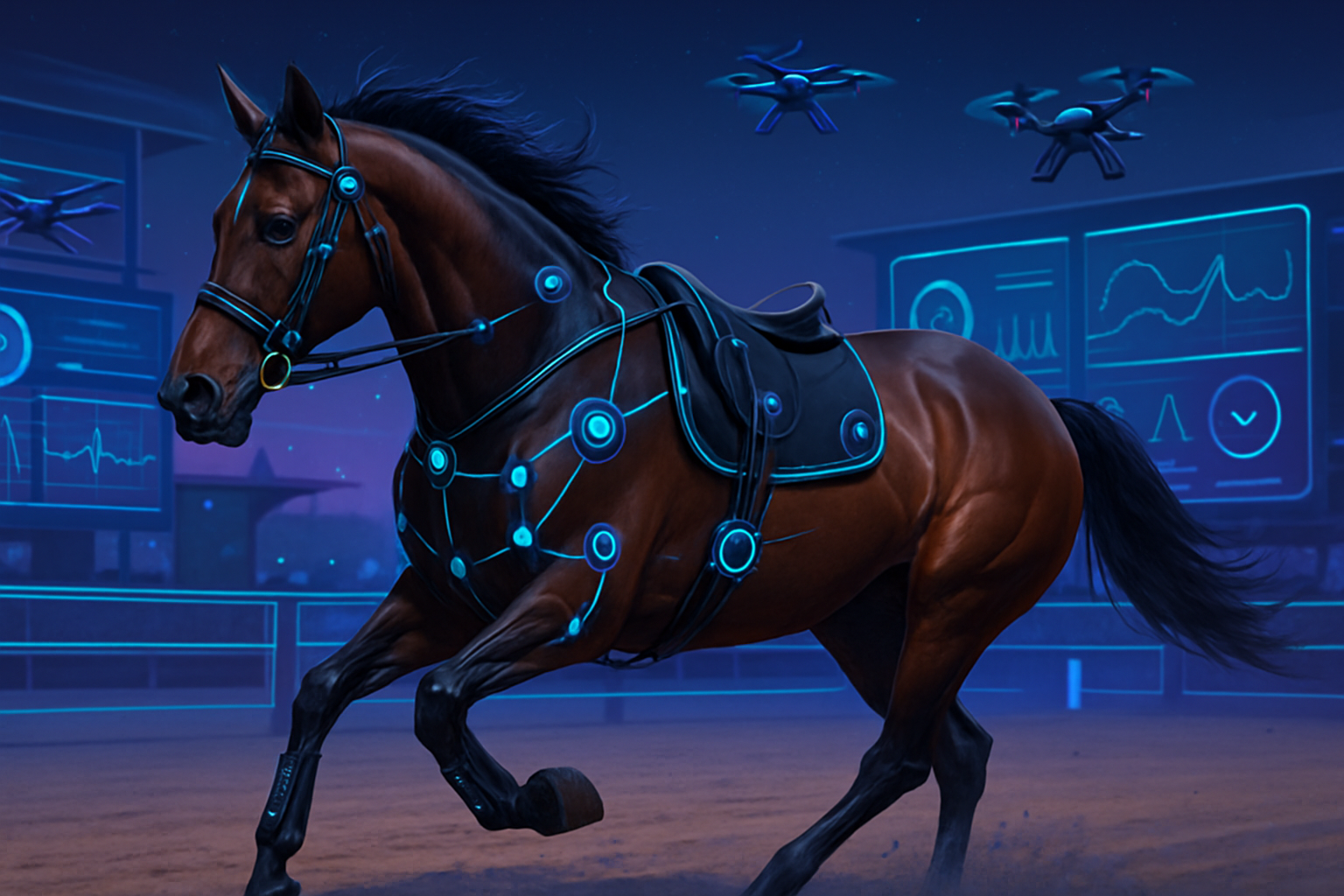The interaction between *horses* and humans raises crucial questions about animal welfare. This subject, particularly relevant during equestrian competitions, deserves sustained attention. The emergence of artificial intelligence tools revolutionizes this assessment by providing objective metrics. With innovative technology, it becomes possible to detect the *signs of discomfort* in horses, a decisive advance for the health of these animals. This challenge raises awareness among industry stakeholders about the importance of ensuring the well-being of horses while addressing growing societal concerns. The promising results of this research herald a *new era* for assessing equine emotions in competition.
Artificial Intelligence Technology for Horses
A team of ethologists from the National Institute for Agricultural Research, Food and Environment (Inrae) has developed an artificial intelligence system capable of assessing the well-being of horses in competition. This scientific innovation is based on a machine learning program developed from a selection of annotated photographs. The accuracy rate reaches approximately 90% for detecting discomfort in animals from images and videos, attesting to the effectiveness of this technology.
Understanding Equine Emotions
Previous research had already shown that horses are capable of grasping human emotions. Conversely, understanding the sensations experienced by these animals remained limited. Thanks to this tool developed by Inrae, it becomes possible to measure more objectively the feelings of horses during equestrian events. The facial expressions of the equines, recorded in photographs and videos, are now the main indicators of potential distress.
Analysis of Behaviors and Emotions
Léa Lansade, who led the project, emphasizes the importance of head expressions and their interpretation. The research highlights that these expressions provide much more accurate information about the well-being of horses than their body postures. By analyzing these movements, researchers are able to establish a correlation with the positive or negative emotions felt.
Societal Reactions to Equestrian Practices
The implementation of this technology responds to a growing societal demand regarding animal welfare, particularly in the context of competitions. The incidents that occurred during the Tokyo Olympic Games, where cases of mistreatment were widely reported, have amplified concerns about the treatment of horses. Vincent Boureau, vice-president of the French Equine Veterinary Association, stated that this research is essential to objectify the issue of equine welfare.
Future Perspectives of the Algorithm
To enrich this artificial intelligence program, the Inrae team plans to incorporate additional data on facial expressions collected during previous studies. It intends to apply the FACS method (facial action coding system) to equines, meticulously coding each anatomical movement of the horses’ heads. This approach allows for a more in-depth decoding of emotions and the animal’s ability to express their comfort or discomfort in different situations.
Awareness and Adoption of Technological Solutions
The integration of artificial intelligence in the equestrian field raises broader issues. It allows for better awareness of animal welfare problems and paves the way for greater responsibility in the use of horses for competitive purposes. The advancement of this technology could influence current practices in the equestrian world by establishing stricter norms for monitoring and behavioral analysis.
The ramifications of this research go beyond the competitive framework, touching the entire equestrian sector and opening the door to ethical discussions about the use of animals in sports. The gradual involvement of artificial intelligence could even lead to a transformation of the quality of life standards for horses in the long term.
Frequently Asked Questions
How can artificial intelligence help assess the well-being of horses in competition?
Artificial intelligence can analyze photographs and videos of horses to detect signs of discomfort or pain. By using machine learning algorithms, researchers can identify facial expressions and movements that indicate the emotional state of the animal.
What methods are used to train AI to recognize the emotions of horses?
Researchers use annotated photographs based on various criteria, including head movements and facial expressions. This data is then analyzed using the FACS method (facial action coding system) adapted for horses to better decode emotions.
What signs of discomfort can AI detect in horses?
AI can detect signs such as tension in facial expression, signs of distress, or unnatural postures. These elements allow for identifying if a horse is stressed, tired, or suffering.
What is the accuracy of the artificial intelligence tool developed by Inrae?
This machine learning program has demonstrated 90% accuracy in detecting discomfort in horses, which demonstrates its effectiveness in assessing animal welfare during competitions.
Who funded the research on horse welfare using artificial intelligence?
The research was funded by the Equiaction fund of the French Equestrian Federation, highlighting the growing importance of animal welfare in the equestrian field.
Can AI tools be used during competitions to monitor horses in real-time?
Currently, these tools are mainly used for post-competition analyses, but there are prospects for optimization for real-time monitoring, thus ensuring the well-being of horses during events.
What benefits can competitors gain from evaluating their horses’ emotions through AI?
Competitors can enhance their horses’ performance by quickly identifying and addressing signs of discomfort. This also promotes ethical and responsible treatment of horses, thereby strengthening public trust and the reputation of equestrianism.






